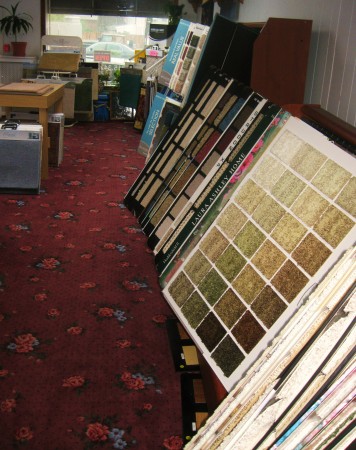Flood clean-up tips from Fox Chase’s The Carpet Shop

The Carpet Shop in Fox Chase offers tips for dealing with flood water. The Carpet Shop in Fox Chase has received many calls for help since the record rain fall in August and earlier this month.
“Most calls deal with how to clean and restore carpets, replace carpets and insurance issues,” said Pamela Dollack, marketing manager for The Carpet Shop.
Dollack says the Carpet Shop is there to help neighbors through these tough times: “The shop is willing to visit homes/businesses and assess damage and offer expert advice on restoration and replacement of damaged carpet.”
Dollack recently released the shop’s top floor-clearing tips. They may come in handy as heavy rains remain in the forecast.
Safety first: Before you set foot inside your basement to begin cleaning, turn off your electricity. Use a broom handle to reach your switch box. Call a licensed electrician to address any concerns. Safety is paramount.
Wear the proper attire: Once you determine it’s safe to proceed in the water, wear waterproof boots and gloves to protect you from dirt, germs and bacteria. Mold and mildew thrive in basements, so wear a protective face mask to prevent you from breathing in mold spores.
Quick removal: Removing all wet items from a flooded basement or office is essential to drying out your carpet. Area rugs should be removed immediately and placed somewhere waterless to dry completely before being placed back. If the carpet or rugs cannot be removed, remove every item from the carpet as soon as possible and focus on the flooring. A wet/dry vacuum works well to remove water from small areas.
Eliminate mold: Carpets should not be left wet for more than two days, as they then become breeding grounds for mold. If you notice mold growing, immediately remove the mold with a mold and mildew killer. If doable, place your carpet in a well-ventilated, damp-free area, as molds thrive on moisture. However, if mold has begun to appear, it may be best to get rid of your carpet and replace it.
Clean thoroughly: Clean your floors with a solution made of 1 cup of bleach and 5 gallons of water. Again, be sure to wear rubber gloves and work clothes.
Run your sump pump: Use a pump to drain your basement of any leftover water. If the water is several feet deep, it needs to be removed slowly. Pumping water too fast will create low pressure on the inside of your basement and higher pressure on the outside, which can possibly cause your basement walls to fall in. If you have a floor drain, mop all the water into the drain. If not, mop up excess water and squeeze it into a bucket.
Dry out your basement/office: As mentioned, damp areas are an invitation to mold, mildew, and other bacteria. Therefore, it’s important to quickly dry out your basement or office. Open your windows and doors to speed up the process. Turn on large fans and use a dehumidifier to expedite the drying. Do not dry wood floors too quickly, as it will cause them to warp and buckle.
Replace: Hardwood floors may very well need to be replaced if they have been soaked by flood water. And with regard to rugs, when in doubt, throw it out. Toss out all water damaged rugs, and replace promptly.
“The important thing to remember is that cleaning your floors after a flood, whether in your own home or in your office, should be handled immediately,” The Carpet Shop owner Joe Dollack explained. “Otherwise you may not only lose your carpet or hardwood floors, you may possibly endanger your health and the health of your family.”
WHYY is your source for fact-based, in-depth journalism and information. As a nonprofit organization, we rely on financial support from readers like you. Please give today.



